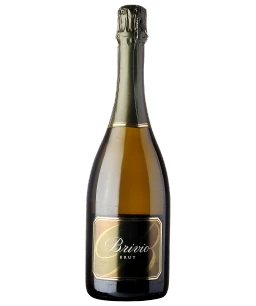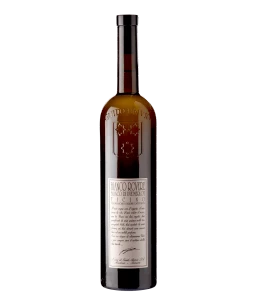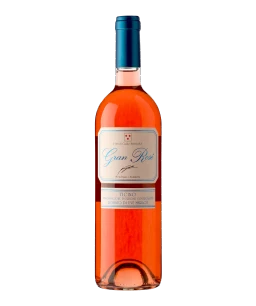Brivio / Gialdi
For most of wine lovers in Switzerland, the name Guido Brivio is no unknown. However, abroad, it is a different story. Only after many years in the trade has he become among the wine experts and professionals of New York or London an insider tip, so to say, from an infinitesimally tiny unknown corner in the great international wine world.
Although Guido’s grandfather was a wine merchant, he didn’t grow up in this industry, or even on a wine estate. At home, life didn’t revolve around grapes, but artichokes! His mother and uncle jointly possessed the Swiss production rights for Cynar. Only after studying business in London did the young Guido decide to study oenology in Bordeaux. His mother was delighted, as she saw that a certain family tradition could now continue. There then followed a stay in Sonoma Valley, California, where he became acquainted with American wine producers’ carefree, adventurous way of working.
Sparkling wines from Brivio / Gialdi
White wines from Brivio / Gialdi
Rosé wines from Brivio / Gialdi
Red wines from Brivio / Gialdi
Spirits from Brivio / Gialdi
from Brivio / Gialdi
Back in Mendrisio, his objective was clear: his own wines, which would would stand clearly apart from all others in the canton of Ticino. His family provided strong support, and upon the purchase of a winery in 1989, he was able to begin production and realise his ideas. Such as, for example, maturing the wines in barriques and pressing a white wine from the red Merlot grapes. The Bianco Rovere, which was moreover also matured in barriques, also represented a mini revolution, bordering on blasphemy for some of Ticino’s inhabitants. However, there were others, even though few in number, who supported him right from the outset.
Guido Brivio’s business has grown continuously for more than 25 years. Today, he counts among Switzerland’s most successful wine producers. Since 2001, he shares a joint venture with the just as famous winegrower, Feliciano Gialdi. The winery is located in Mendrisio, at the foot of the Monte Generoso. The cellars are hewn out of the rocks, and these cellars ensure the finest wines, kept in barriques, are kept at a naturally constant temperature. They previously served as larders for a grotto (rustic restaurant), and therefore housed not just wine but also ham, salami, cheese and other foodstuffs. The building next door houses the winery, with its state of the art infrastructure.
Guido Brivio doesn’t own his own vineyard. He works in partnership with winegrowers who supply him with the grapes. Some of these relationships go back decades. Some are professional growers, but other suppliers are families who own just a few rows of vines but cultivate them lovingly. And of course, only the very highest quality grapes are accepted.
These originate from the so-called Sottoceneri, the part of the canton of Ticino that lies to the south of Monte Ceneri. The area comprises the Lugano, Malcantone and Mendrisiotto regions. The soil is chalky and contains a greater proportion of lime than in the Sopraceneri, where predominantly granite stone formations with a low chalk content are found. The climate is influenced by the Alpine region as well as by the nearby Po Valley and Mediterranean sea. Although this area, Switzerland’s sun lounge, with its more than 2000 hours of sunlight a year, counts among the sunniest areas of our country, at the same time, its approximately 1800mm rain a year also makes it the region with the greatest rainfall. Around 1000 hectares are planted with grapes, of which more than 800 are planted with Merlot. This variety of grape, which was only introduced to the southernmost canton at the start of the 20th century, has become Ticino’s true hallmark. However, smaller areas of other white and red grape varieties are also cultivated. Guido Brivio’s range can therefore be seen as a mirror image of Ticino’s vineyard region and people: exciting, diverse, steeped in tradition, modern and likeable.

Producer
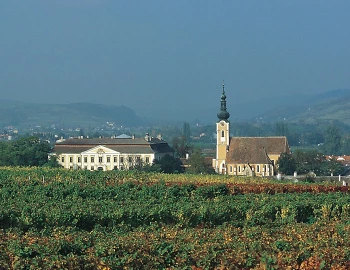
Weingut Schloss Gobelsburg
The first written evidence of Schloss Gobelsburg dates from 1074, but it was in 1171 that the Cistercian monks from the Zwettl monastery obtained the first vineyards at Heiligenstein and at Gaisberg in the Kamptal. Visitors entering the baroque-style complex built on a slight mound sense this tradition, this spirit, this experience accumulated over the centuries. The view takes in all the surroundings, from the village of Gobelsburg to the vine-covered hills of Heiligenstein. Inside, near the parish church where couples say yes for life, when the weather is pleasant, the pretty and romantic garden invites all to rest for a while.
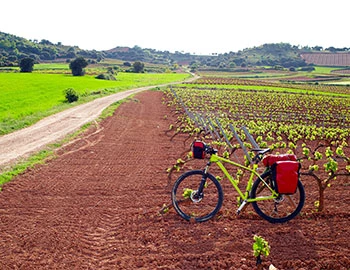
Bodegas Amézola de la Mora
The Amézola de la Mora family vineyard originated in the 19th century. Already then it enjoyed a good reputation in large parts of the country. With the appearance of the dreaded phylloxera plague, however, production unfortunately came to an end. In 1986, Iñigo Amézola de la Mora brought the family estate back to life.

Bodegas Ribas
We could talk about Bodega Ribas on Mallorca, all day long. But it's best to see and read for yourself! We sent wine journalist Britta Wiegelmann and cameraman Felix Groteloh to experience the winery and the family at first hand. Araceli and Javier Servera Ribas, the brother and sister team behind the wines, tell us how the oldest existing winery on the island survived phylloxera, why they love their local grape, the Mantonegro, so much and what the sea has to do with it all.

